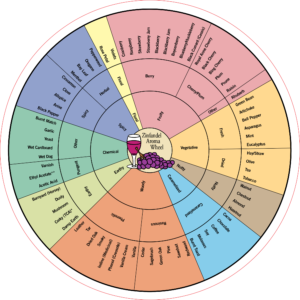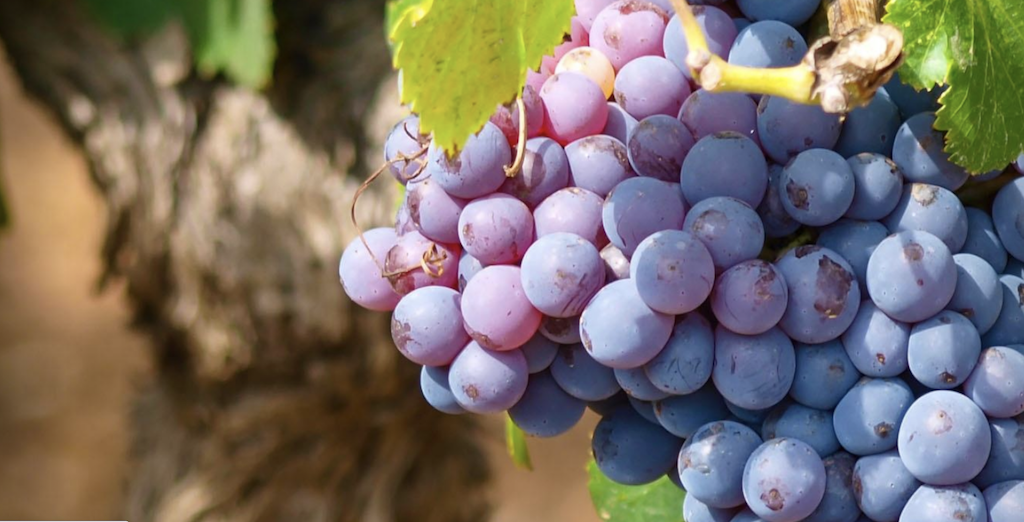
The benefits of describing wines in specific terms, such as these on the Zinfandel Aroma Wheel, are your greater enjoyment and appreciation of the wonderful world of wines, plus an enhanced ability to discriminate and remember wine flavors. Describing Zinfandel aromas is very simple with the help of this lexicon. Words are arranged in three tiers, from the most general in the center to the most specific in the outer ring. Terms for similar aromas are located adjacent to each other wherever possible. The distinctive aromas o varietal wines can often be recognized by the specific aroma notes listed below.
Aroma standards to illustrate these terms can be made easily by using a small amount of the food product in a neutral, low-aroma red or white wine. A few drops of vanilla extract or a small piece of bell pepper in wine, for example, will define the vanilla and bell pepper aromas.
Much of the aroma in Zinfandel comes from the starting grapes. Many of these aromas will depend upon where the grapes were grown (Mendocino, Paso Robles, or Sonoma), the age of the vines (90 years old as opposed to 10 for example), the clone of Zinfandel, the pruning method and subsequent crop level, the elevation of the vineyard, the ripeness of the grapes at harvest, and the impact of the weather the year the grapes were harvested. These aromas are associated mostly with fruit (raspberry, blackberry, plum, etc.).
Winemaking operations can modify these aromas. A strawberry fragrance can be created, for example, by adding whole grape clusters to the must. Malolactic fermentation can impart the scent of cream, and various types of oak can give hints of vanilla, toast, or spice.
The Zinfandel Aroma Wheel is sponsored by ZAP, Zinfandel Advocates & Producers. ZAP acts as a resource, connecting the Zinfandel community around the world. As a non-profit organization, ZAP develops enriching programs and events to educate the wine enthusiast and the general public on the dynamic impact that the Zinfandel grape has had on our culture and the way America embraces wine today.
History states Zinfandel was one of the first grapes planted for wine in America. Today, 100 year old vines are harvested and grace California’s spectacular landscapes.
